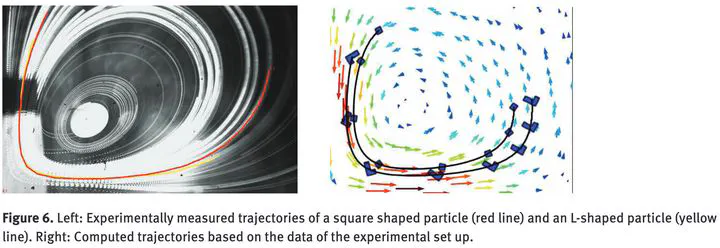Numerical Simulation of Surface Acoustic Wave Actuated Separation of Rigid Enantiomers by the Fictitious Domain Lagrange Multiplier Method
Jan 1, 2015·, ,,,·
0 min read
,,,·
0 min read
Stefan Burger
Thomas Franke
Dr. Thomas Fraunholz
Ronald H. W. Hoppe
Malte A. Peter
Achim Wixforth

Abstract
Enantiomers are chiral objects which differ by their orientation and are thus referred to as left-handed and right-handed enantiomers. In applications they mostly occur as so-called racemic compounds consisting of approximately the same amount of left- and right-handed species which may have completely different properties. Hence, the separation of left- from right-handed enantiomers is an important issue. Conventional technologies are based on gas or high pressure liquid chromatography, capillary electrophoresis, or nuclear magnetic resonance, but typically they are slow and require costly chiral media. A new idea for separation of chiral objects is based on introducing them in certain vorticity patterns, which has been shown to work in theory for an extremely simplified setting by Kostur et al. [Phys. Rev. Lett. 96 (2006), 014502-1–014502-4]. In this paper, we investigate whether these ideas can be successfully adapted to a more realistic setup which can be implemented experimentally. For this purpose, we simulate transport of rigid chiral particles in a fluidic environment by an application of the fictitious domain Lagrange multiplier method due to Glowinski et al. [J. Comput. Phys. 169 (2001), 363–427] which has been designed to study the motion of rigid particles in carrier fluids. Numerical results are presented which illustrate the feasibility of enantiomer separation in flow fields consisting of pairwise counter-rotating vortices. Moreover, a first experimental setup based on surface acoustic wave generated vorticity patterns on the surface of a carrier fluid is devised which reflects the idealized numerical model and gives promising results with respect to properties of particle propagation. These findings may lead to a new technology for enantiomer separation which is both fast and cost-effective.
Type
Publication
Computational Methods in Applied Mathematics